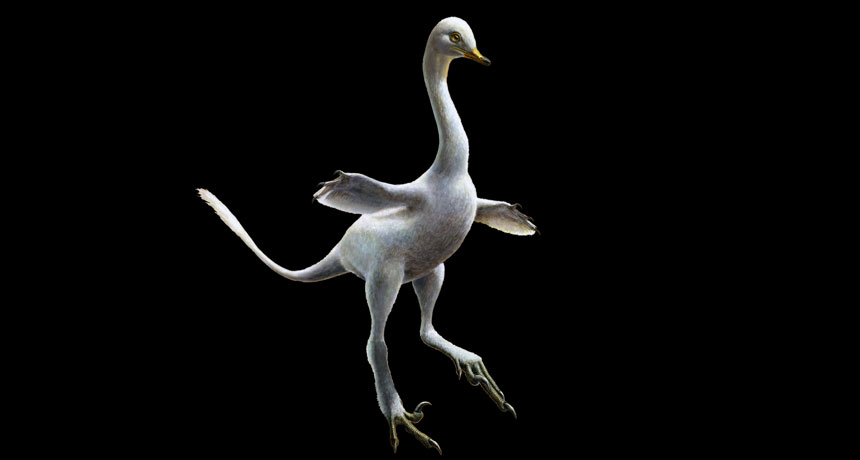This new dinosaur species was one odd duck
Unlike other theropods, its mix of birdlike body parts suggests it took to water like, well, a duck

DINO SWIMMER This birdlike dinosaur, Halszkaraptor escuilliei, probably spent a lot of time in the water. It had flipperlike forelimbs, a long neck for snatching aquatic food, and its upright posture resembles that of short-tailed birds such as ducks.
Lukas Panzarin







